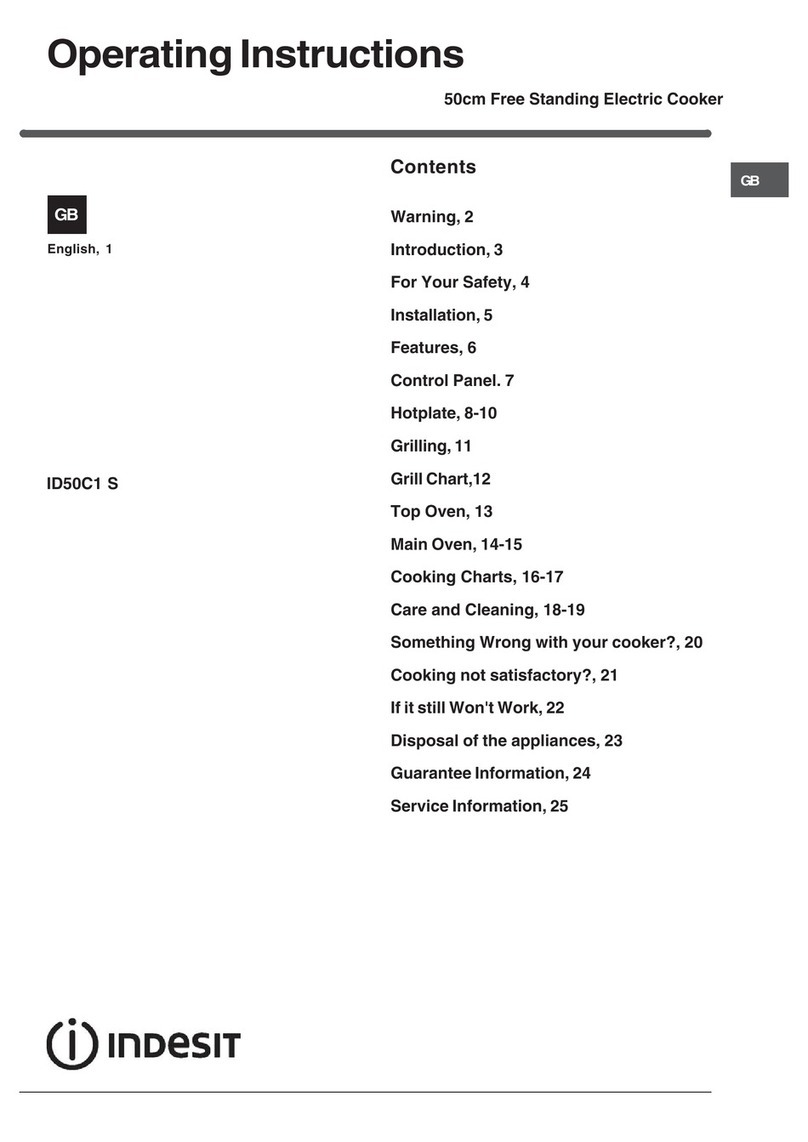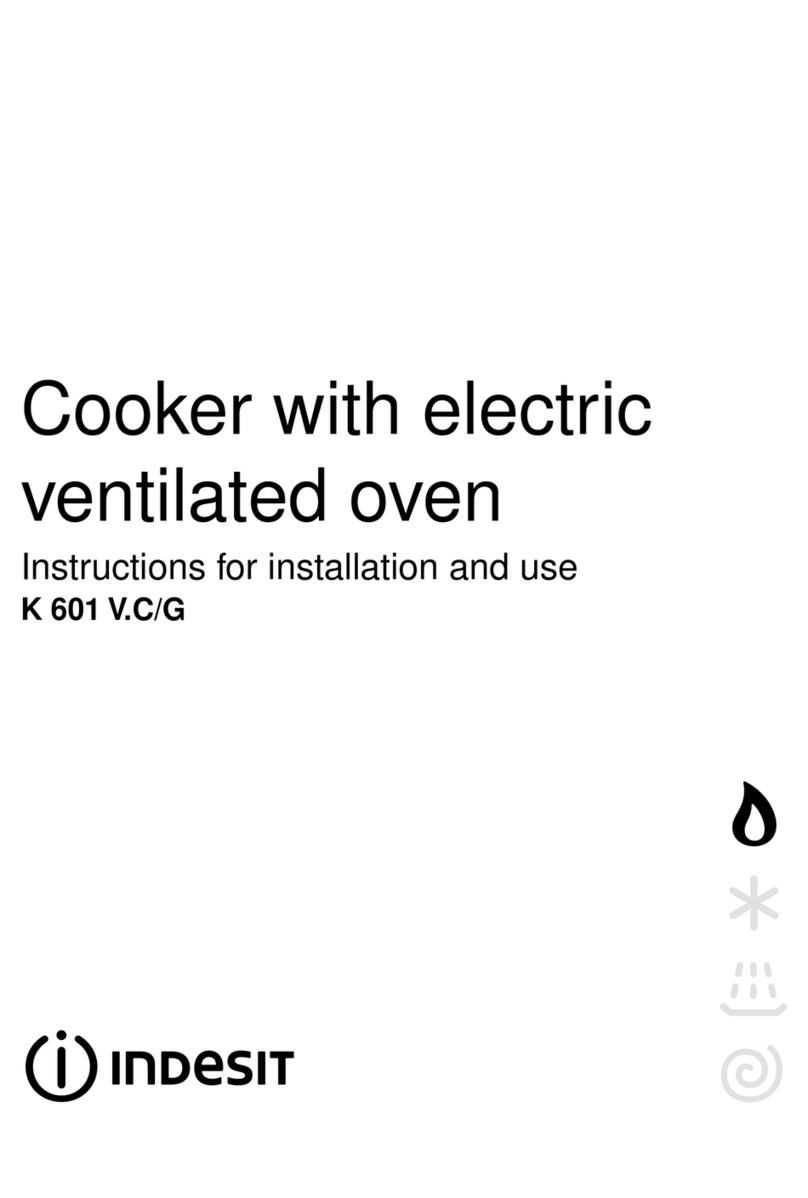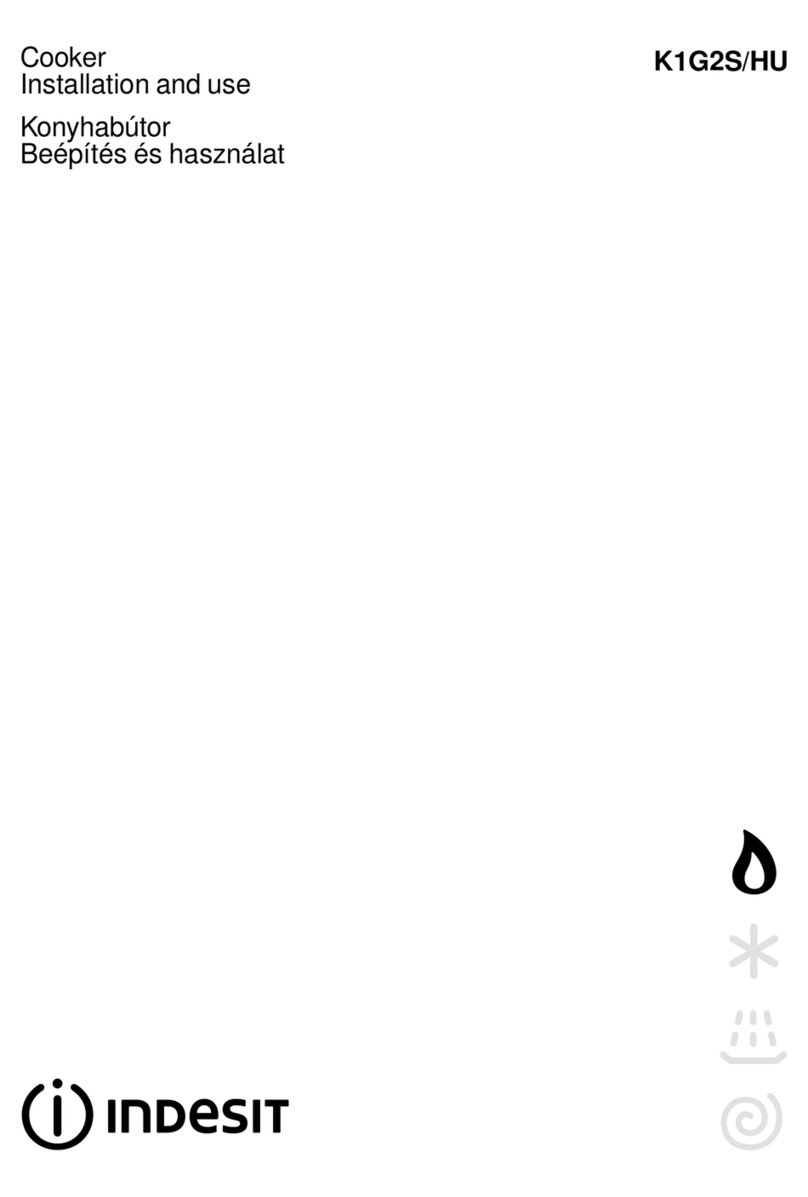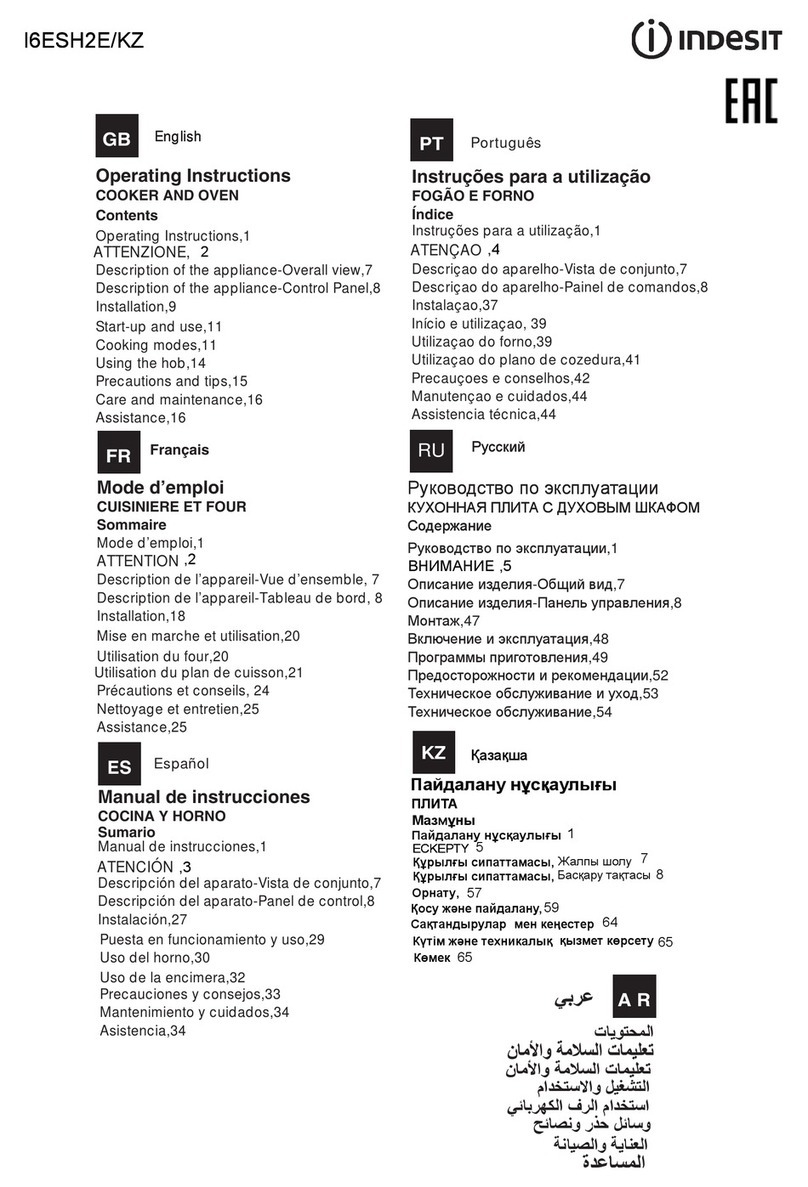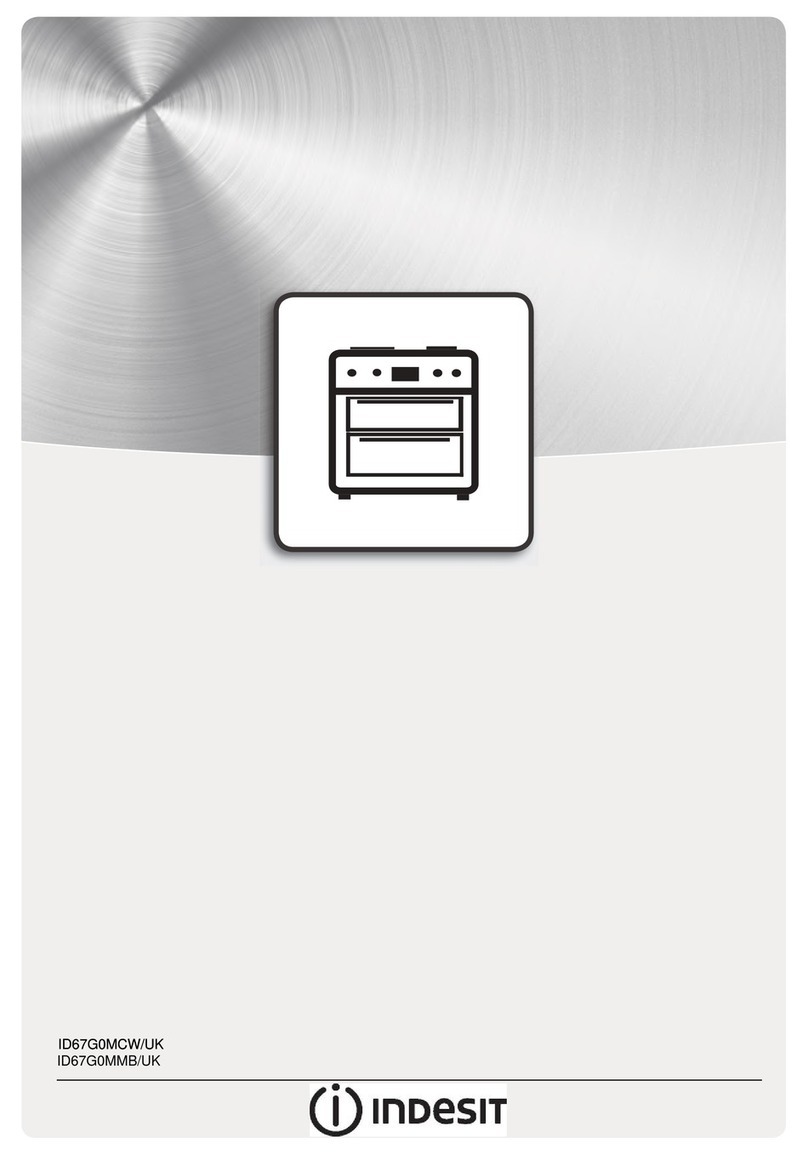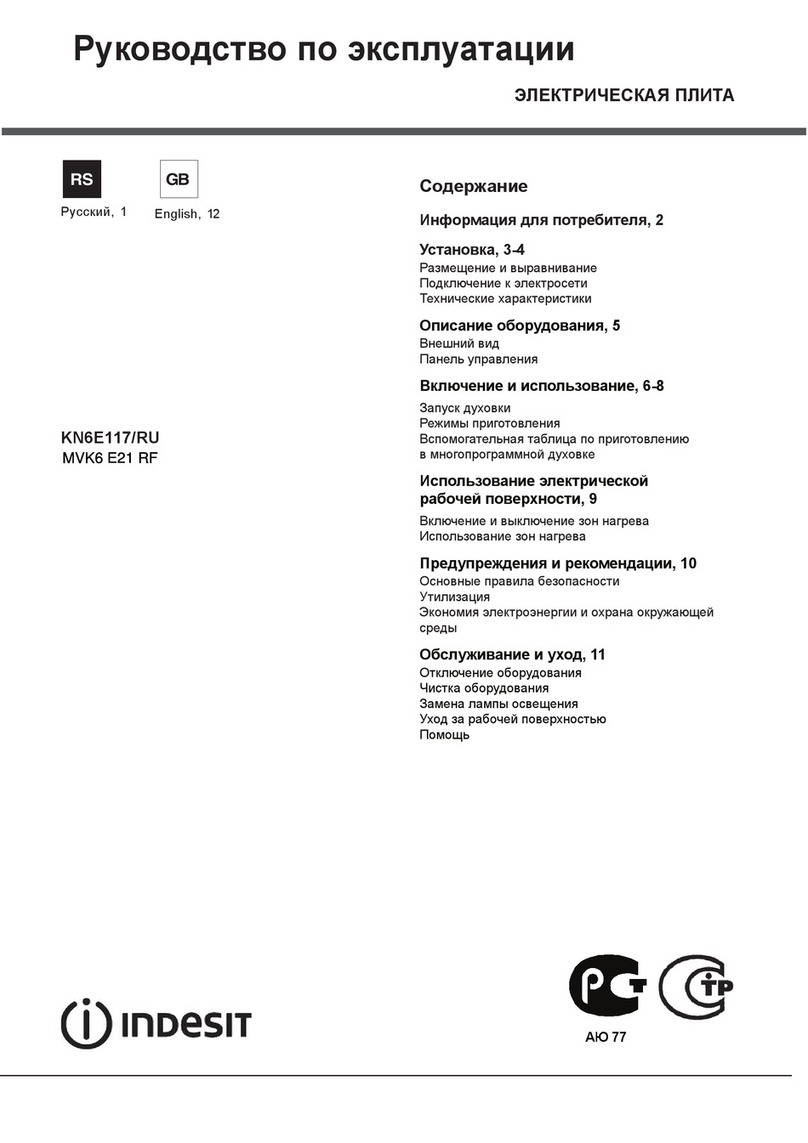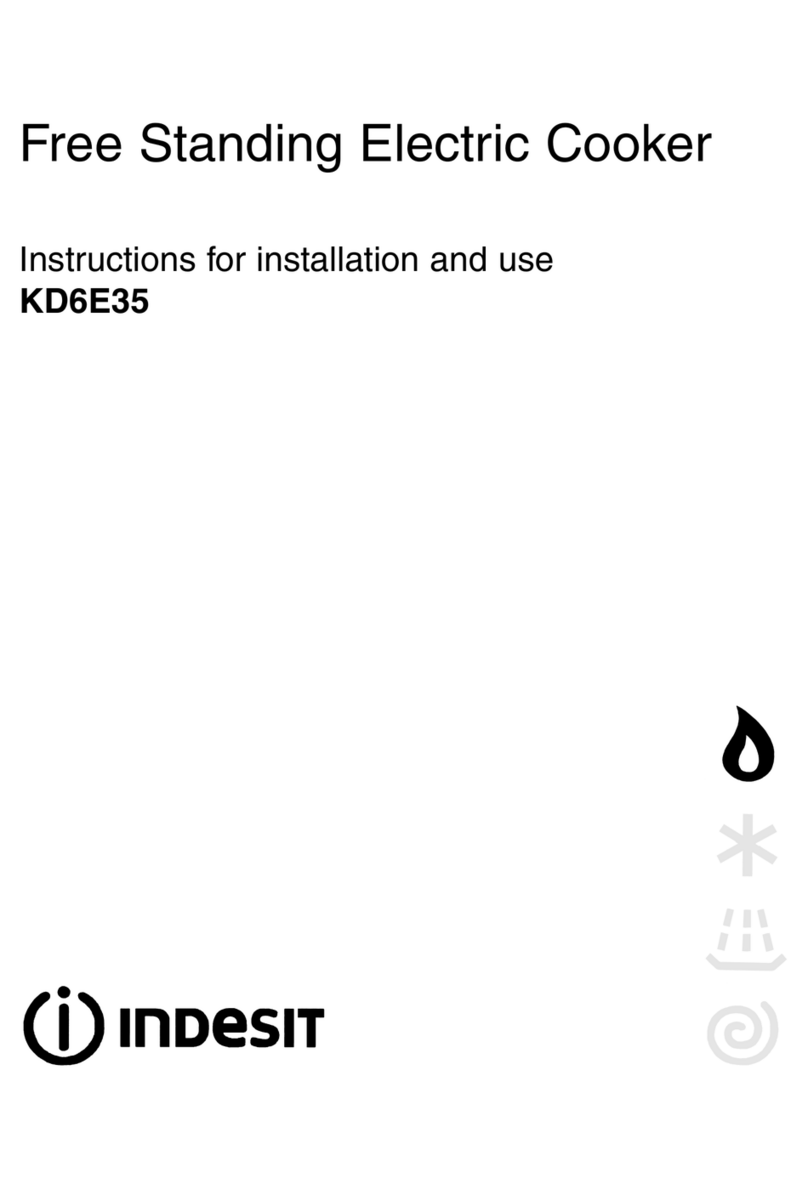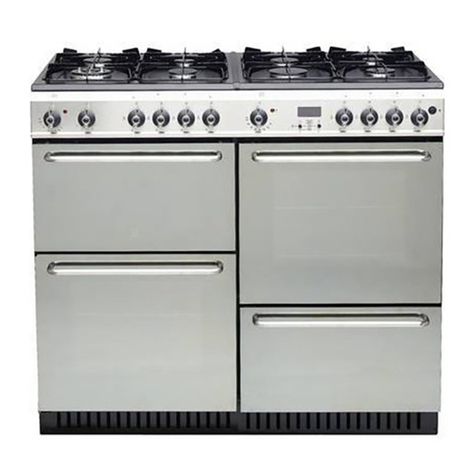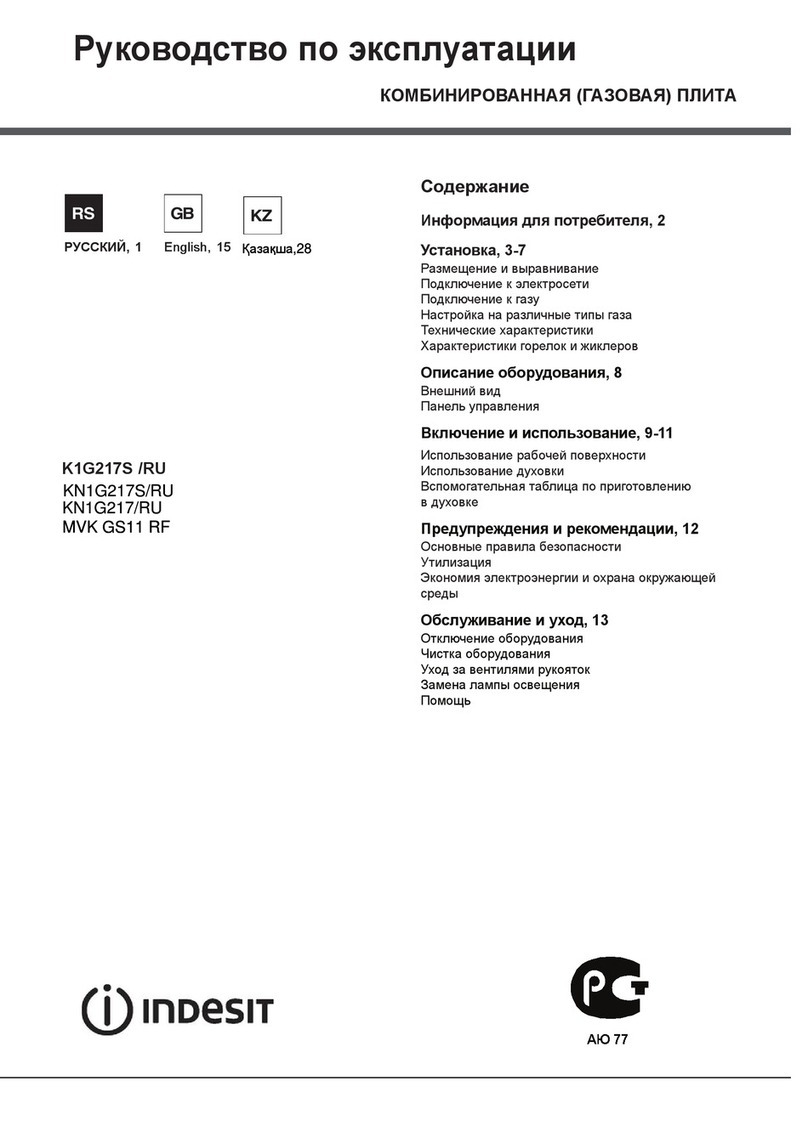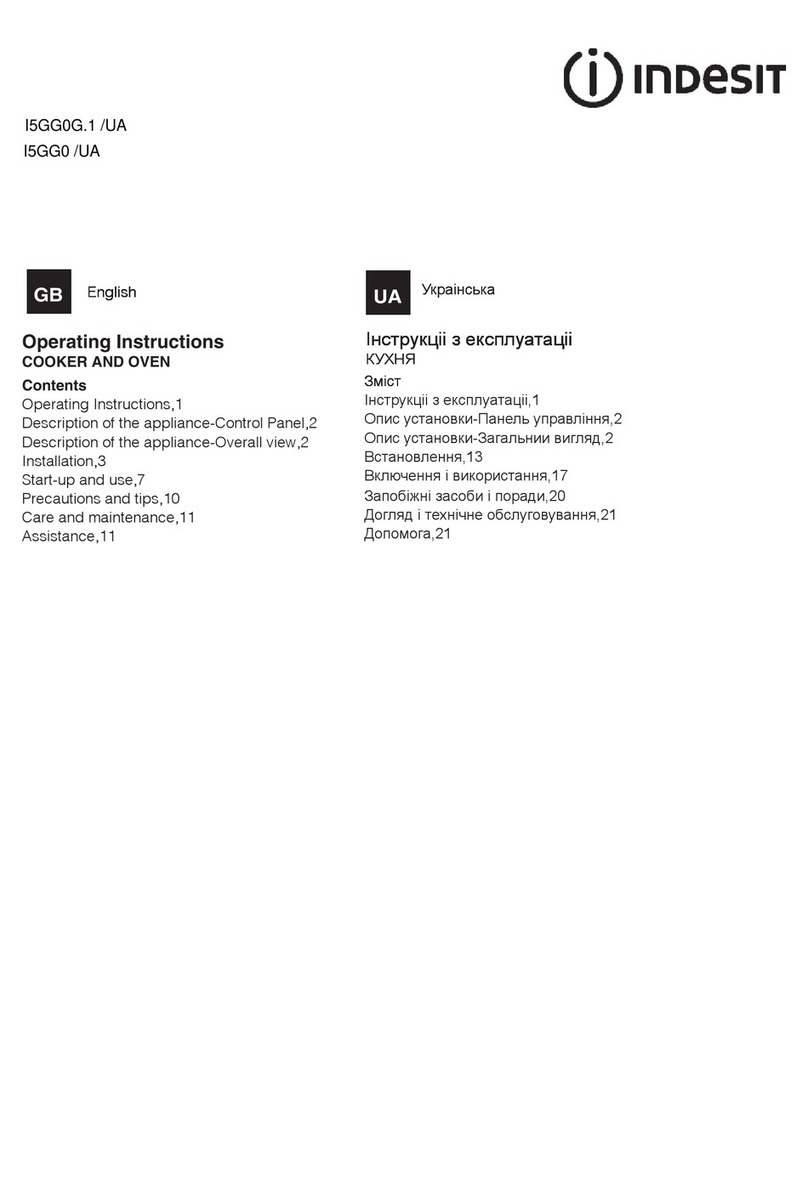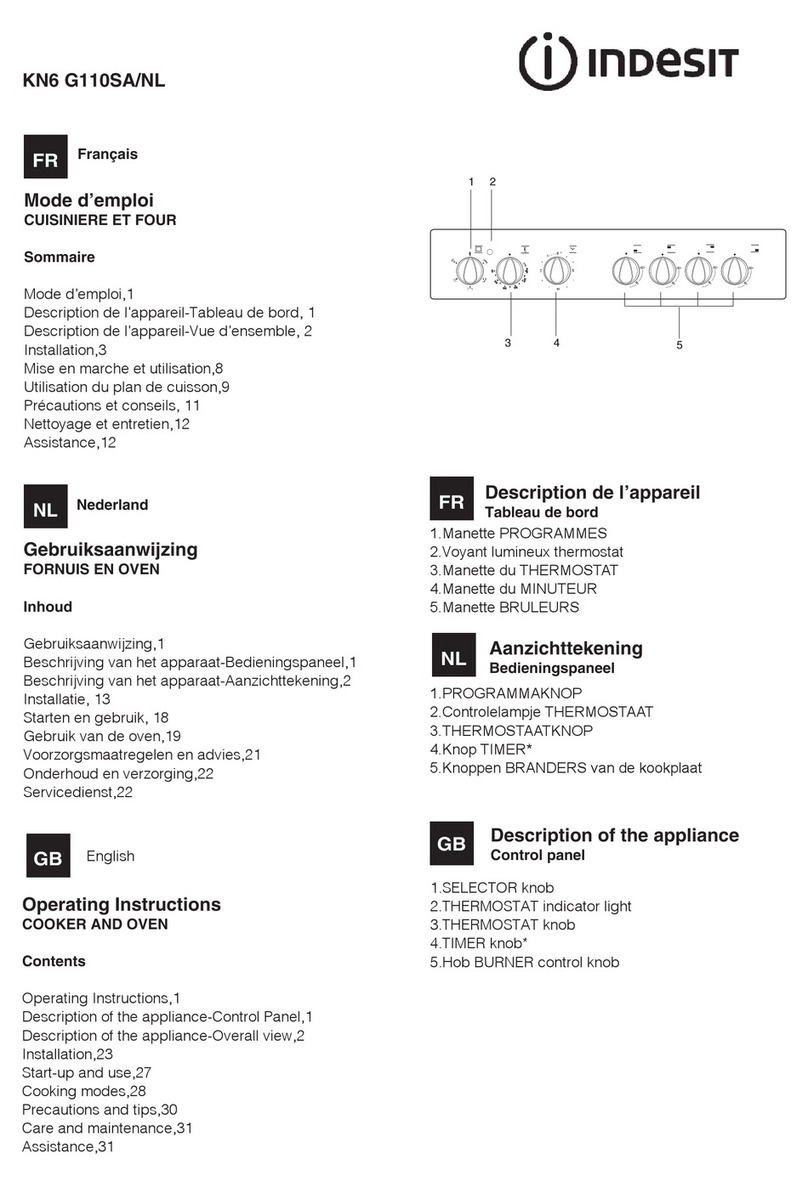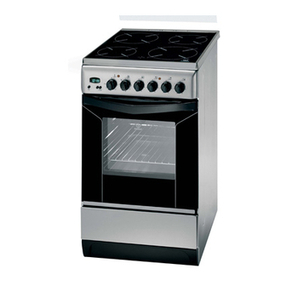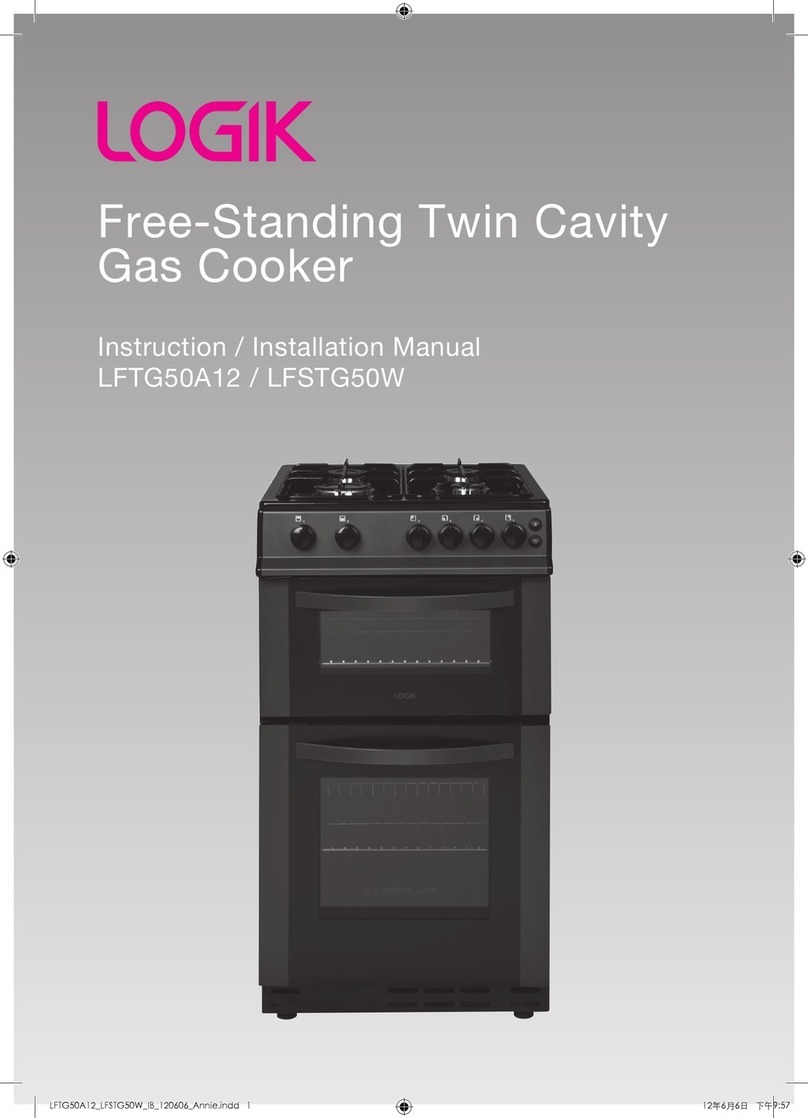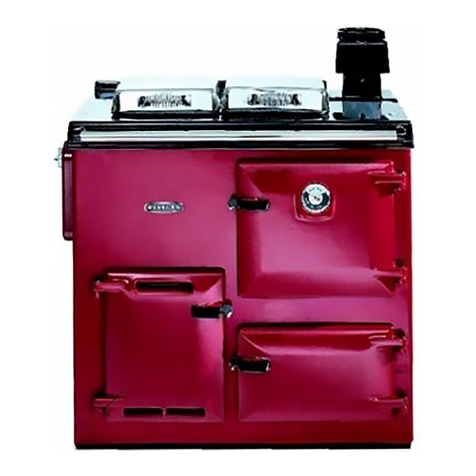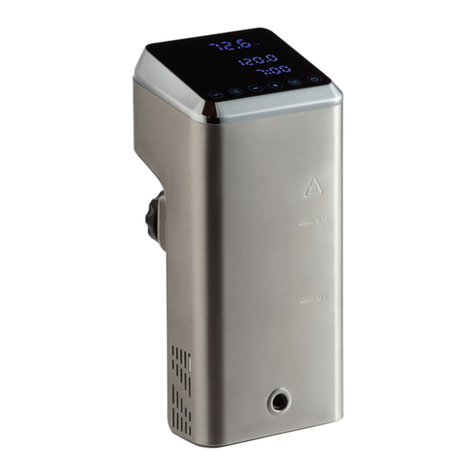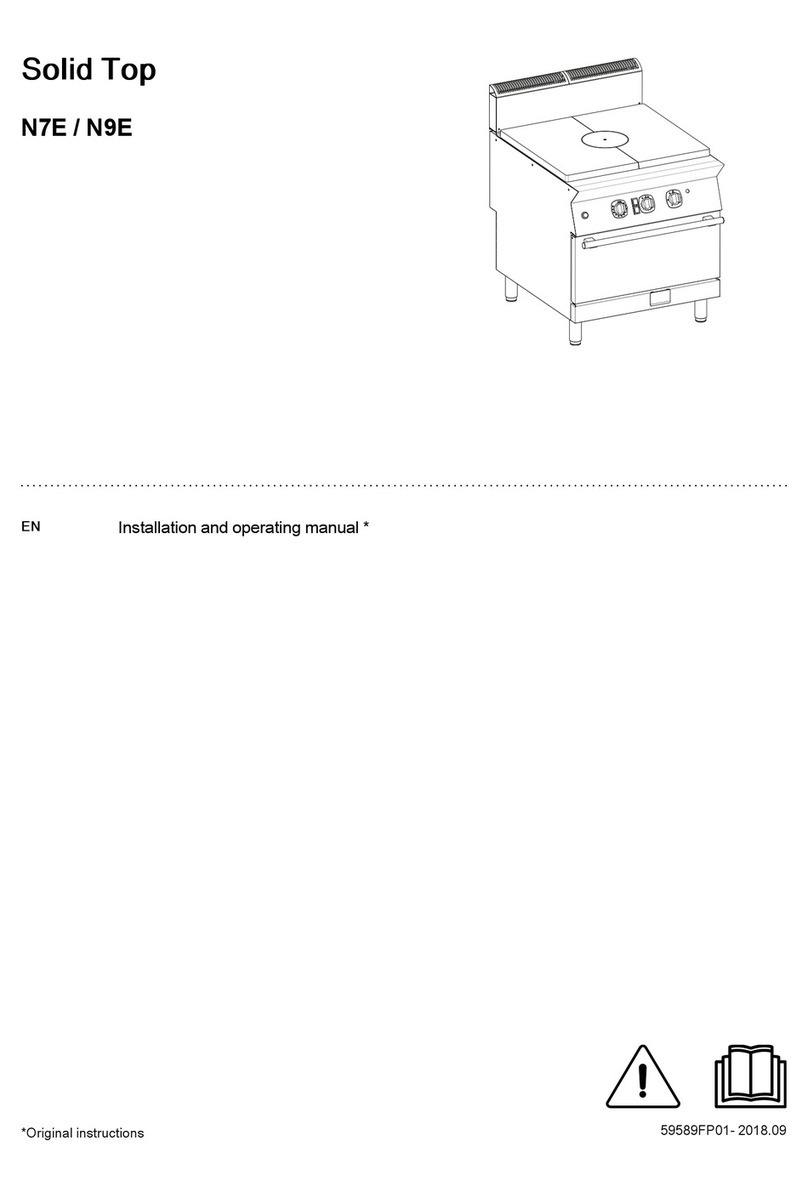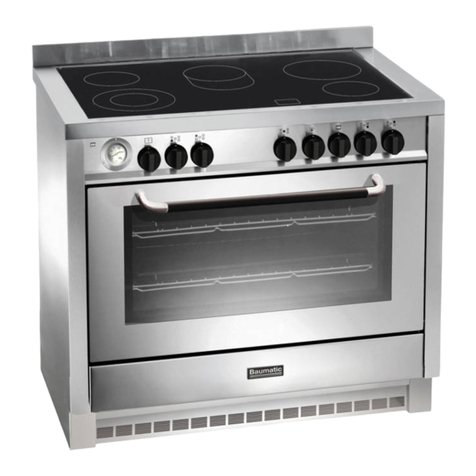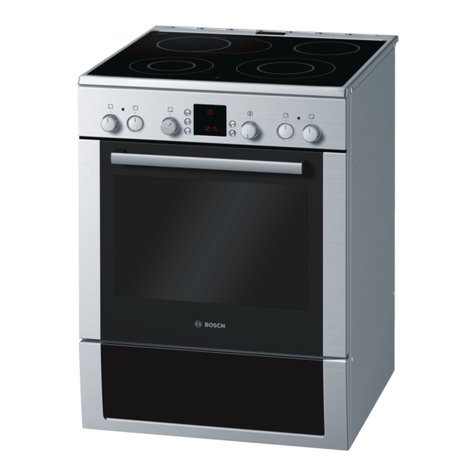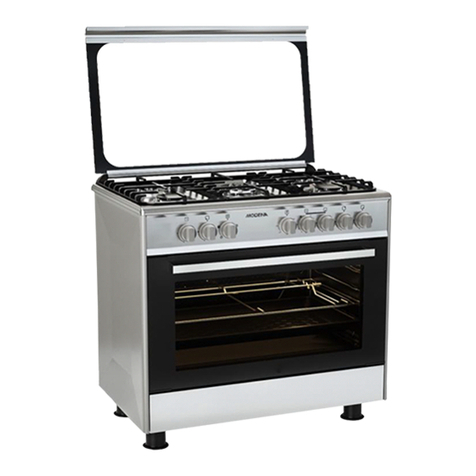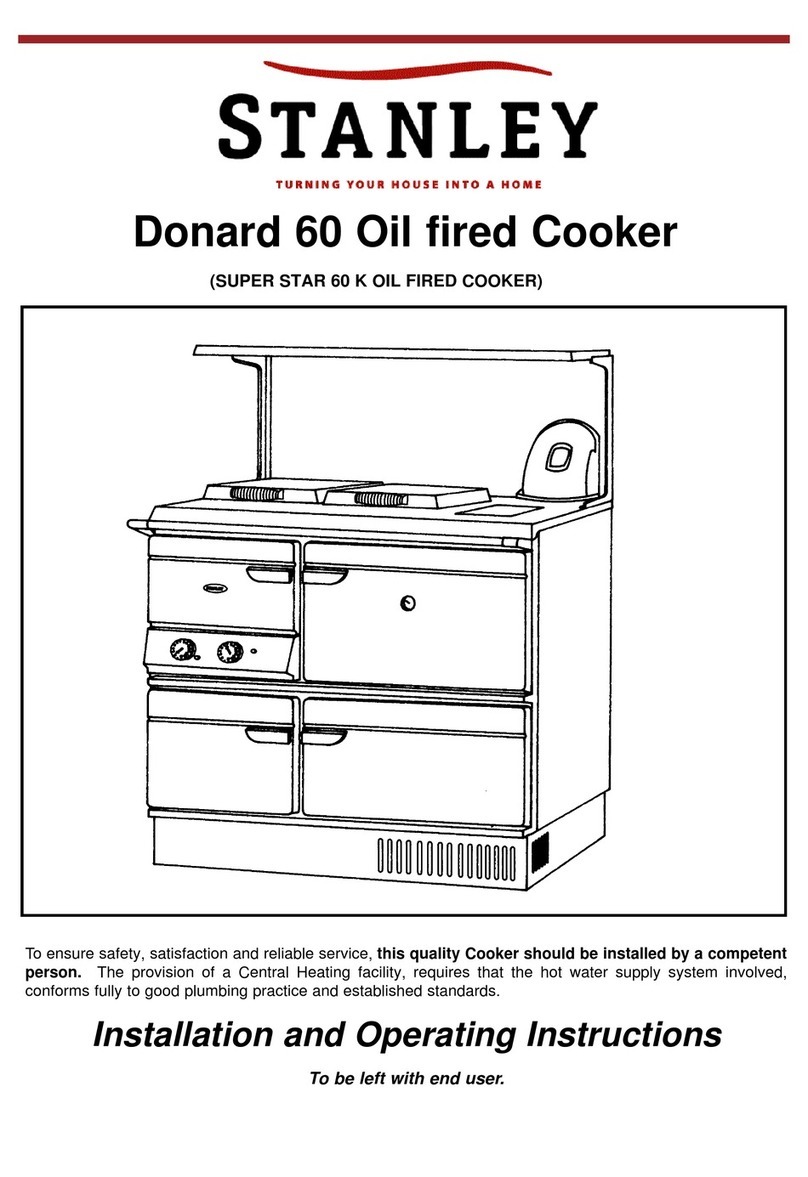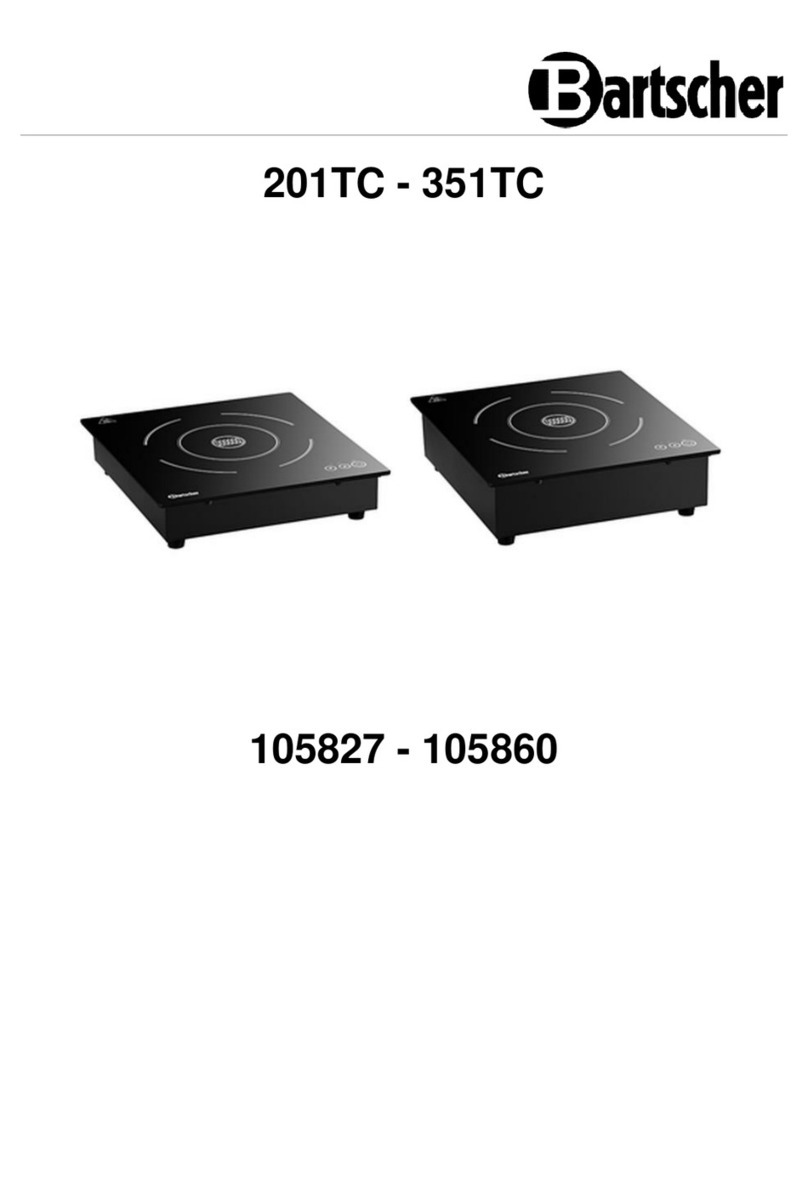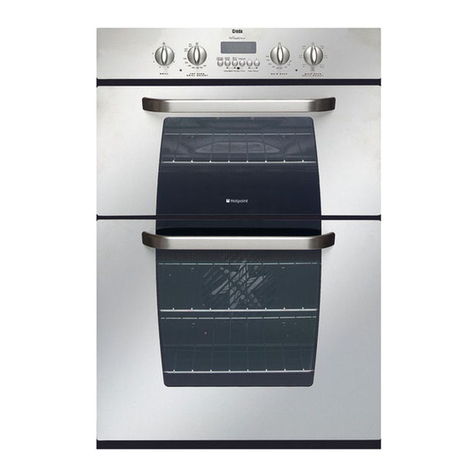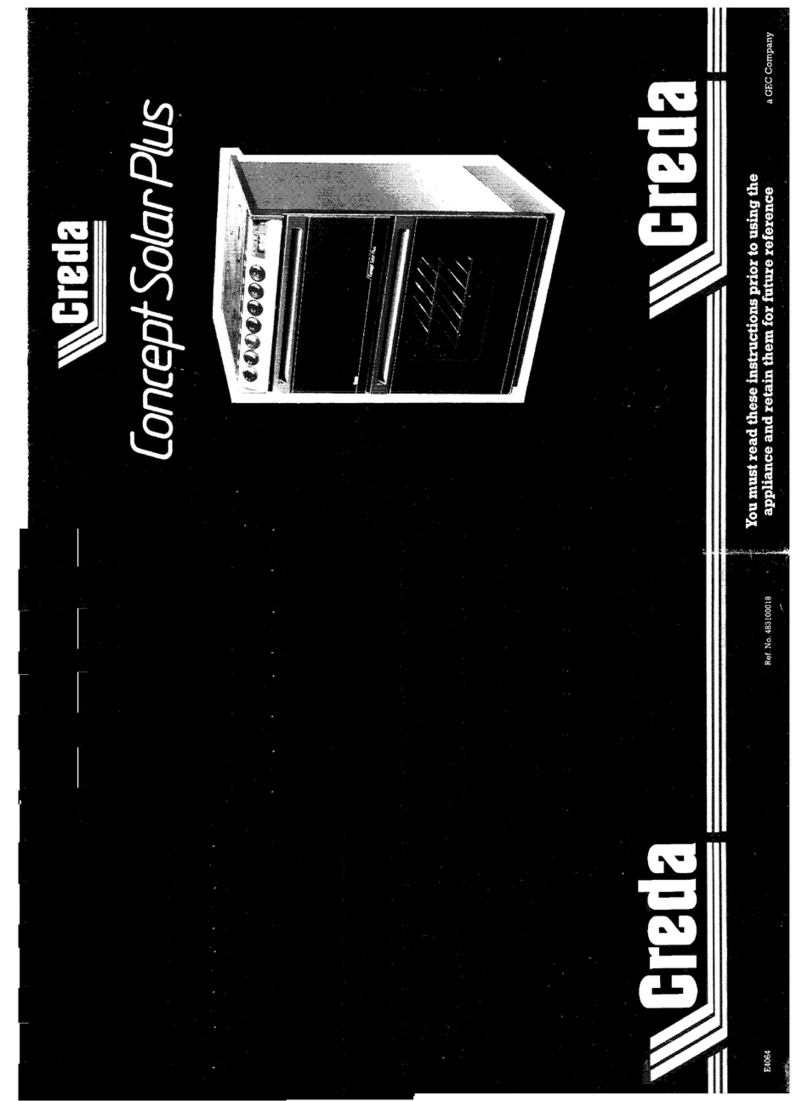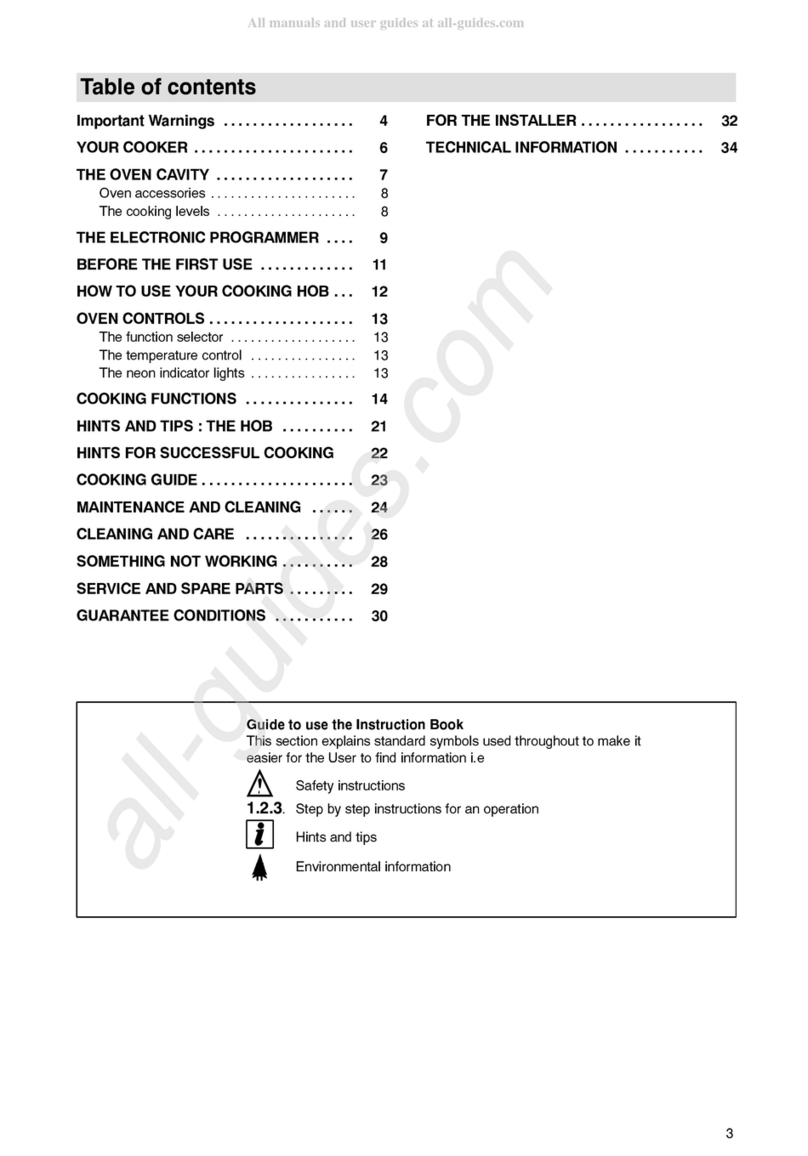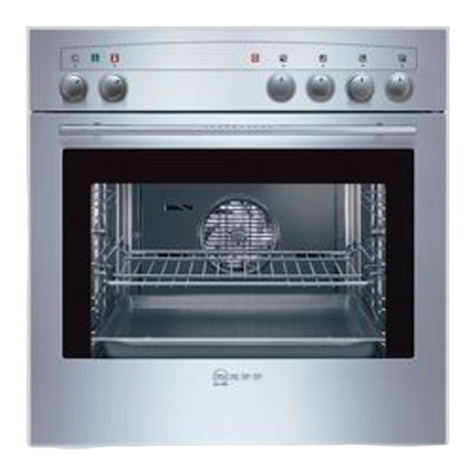10
GB
Main Oven
Oven Control
Heatingof theoven isachievedby turningcontrol
clockwise to the required temperature scale on the
controlpanel, asrecommended inthe temperature
charts. The indicator light will immediately come on
andwill thenautomatically gooff andon during
cooking as the oven thermostat maintains the correct
temperature.
Thecooking chartsprovided inthis bookare aguide
only,givingapproximatecookingtemperatures and
times. To suit personal taste and requirements, it may
benecessary toincrease ordecrease temperatures
by10°C.
Theoven isfitted withtwo rodshelves.The ovenis
heatedby twotubular sheathedelements located
underthe floorof theovenand onthe ovenroof,inside
the cavity. It should be noted that at the end of a
cookingperiod theremay bea momentarypuff of
steamwhen theoven dooris opened.This will
disperse in a few seconds and is a perfectly normal
characteristicof anoven witha gooddoor seal.
Oven Positions
The correct positioning of food is indicated in the
temperature charts.
To prepare meat and poultry for roasting in your
conventional oven.
(a)Wipe the joint, dry well with a clean cloth, kitchen
tissue etc. and weigh it. Meat which has been
stored in a refrigerator should be allowed to come
to room temperature for approximately 30 minutes
before cook ing, and frozen meat or poultry must
be completely defrosted before placing in the
oven.
(b)The weight of any stuffing used should be added
to the oven ready weight of the meat / poultry
before calculating the cooking time.
(c)Place the joint in the meat pan supplied with your
cooker. Small joints weighing less than 1.75kg
(31/2 lbs) should be roasted in a smaller meat
pan/tin - or they may be ‘pot roasted’ - a small
joint in a large meat pan causes unnecessary
oven splashing and evaporation of meat juices.
(d)Additional fat should not be added, except for
veal, very lean meat or poultry which can either be
‘larded’ with fat bacon or brushed veryvery
veryvery
very
sparinglysparingly
sparinglysparingly
sparingly with cooking oil or melted fat.
(e)Beef, lamb, mutton and poultry may be dusted
lightly with seasoned flour to give a crisp outer
surface. The skin of duck and goose should be
pricked to release excess fat during cooking, and
the rind of pork should be scored, brushed lightly
with oil, and rubbed with salt, to give crisp
crackling.
(f) Potatoes for roasting only require to be brushed
with cooking oil or melted fat.
(g)It is not necessary to baste when roasting in an
electric oven and stock or liquid should not be
added to the meat pan since this only causes
unnecessary soiling, steam and condensation.
For optimum cooking performance, there must be
clearancebetweenmeat panandoven sides.Themeat
panmust beplaced lengthwaysin theoven toallow for
aircirculation.
Times and Temperatures for Roasting
The secret of succulent, tender meat, is not to roast it
too quickly, at too high a temperature. Best results
are obtained when roasting is carried out at a low
temperature.When alower temperatureis used,the
joint loses less weight, is more tender (too high a
temperaturecauses meat tobe toughand dry)and
thesplashing of fatonto theoven interioris reduced to
a minimum. When a complete meal is being cooked
in the oven, cooking time may need to be increased
andtemperature mayneed tobe raisedfor
approximately the last 30 minutes of the cooking
period(for instancewhencooking Yorkshirepudding
toserve withroast beef).The suggestedtimes and
temperatures should be used as a guide, but may
varyaccording to:-
1. Whether you prefer meat rare, medium or well
done.
2. The size and shape of your joint.
(a)A short thick joint requires a longer cooking
period than a long thin joint.
(b)A small joint under 1.5kg (3 lbs) takes longer per
450g (1 lb) cook in the time given for ‘minutes’ per
450g (1 lb) without the ‘minutes’ over added.
(c)Boned/rolled and stuffed joints take longer to
cook through than those with a bone.
N.B.N.B.
N.B.N.B.
N.B.
Rememberto switchoff theoven controlaftercooking
isfinished. If thedoor ofthe ovenis leftopen for long
periods of time with the control switch ON, then the
grillelement willbecome hot.The correctpositioning
of food is indicated in the temperature charts.
